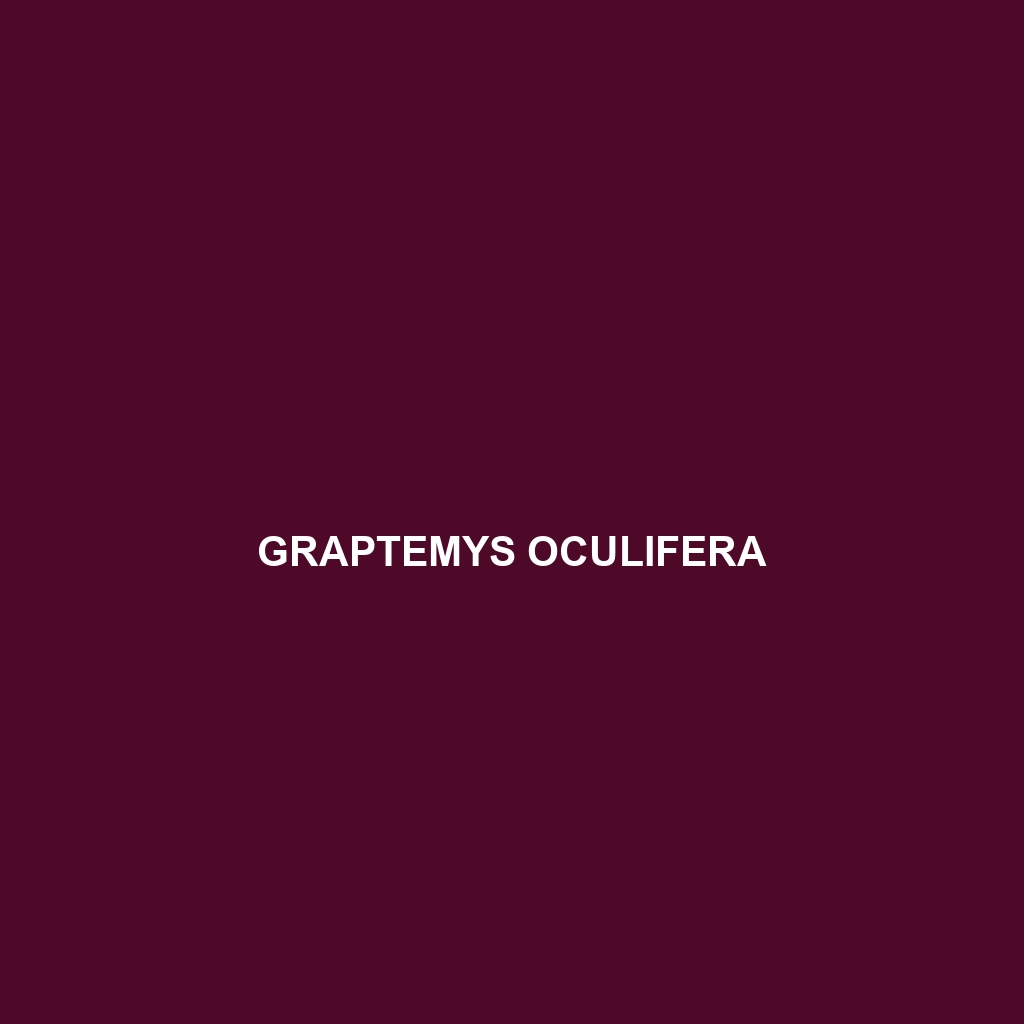Common Name
Graptemys oculifera
Scientific Name
Graptemys oculifera
Habitat
Graptemys oculifera, commonly known as the Ouachita Map Turtle, is primarily found in the southeastern United States, particularly in the regions surrounding the Ouachita River Basin. This species thrives in freshwater habitats, including rivers, lakes, and their tributaries. The river systems characterized by slow-moving waters, abundant aquatic vegetation, and rocky substrates provide an ideal environment for these turtles. They prefer warm climates and are typically found in temperate regions where they can bask in the sun, particularly in shallow water areas rich in amenities such as logs and rocks. The presence of clean, flowing waters is crucial for their survival as it supports their diet and overall health.
Physical Characteristics
Graptemys oculifera exhibits several distinctive physical characteristics that differentiate it from other turtle species. Adult individuals typically range from 4 to 10 inches in carapace length, although some can grow larger. The carapace is a striking olive to brown color with prominent yellow or cream markings and a unique pattern that includes thin, radiating lines. One of its most notable features is the oval shape of its shell, complemented by pronounced ridges that give it a textured appearance. The turtles possess a slender, elongated snout that aids in foraging for food beneath the water’s surface. Their skin is often marked with light stripes on a darker background, making them easily recognizable. Additionally, they are equipped with strong, webbed feet, allowing them to navigate efficiently through their aquatic environment.
Behavior
Typical behaviors observed in Graptemys oculifera include a mix of basking and foraging activities. These turtles exhibit diurnal patterns, primarily engaging in their activities during the day. When basking, they prefer to rest on logs or rocks to absorb sunlight, which is vital for regulating their body temperature. Socially, they are often seen congregating in groups, especially during basking sessions. These turtles are not migratory in the traditional sense; however, they may shift locations within their home ranges in response to seasonal changes or food availability. Mating rituals typically occur in late spring to early summer, during which males exhibit courtship behaviors, such as swimming alongside females and displaying physical traits to attract them.
Diet
Graptemys oculifera is considered an omnivore, displaying a diverse diet primarily consisting of aquatic invertebrates, crustaceans, small fish, and plant material. Their diets vary depending on the season and availability of food sources. In summer months, they are known to consume a significant amount of aquatic vegetation and insects, while during other periods, they may focus on more protein-rich foods such as snails and small fish. Their foraging behavior involves using their elongated snouts to probe into crevices among rocks and aquatic plants, illustrating their adaptability as foragers. The balance of plant and animal matter in their diet is crucial for their overall health and contributes to their growth and reproductive success.
Reproduction
The reproductive cycle of Graptemys oculifera typically begins in the spring, with mating occurring between late March and early June. After successful mating, female turtles lay eggs that range from 3 to 12 in a single clutch. Nests are typically located on sandy or soft soils near the water’s edge, where the eggs can incubate in the warmth of the sun. The gestation period for the eggs is approximately 60 to 90 days, after which hatchlings emerge and make their way to nearby water. Parental care is minimal, with females providing no further support after laying the eggs. Upon hatching, young turtles are extremely vulnerable to predation, making early survival a critical period for the species.
Conservation Status
The conservation status of Graptemys oculifera is currently listed as vulnerable by the IUCN Red List. Major threats to this species include habitat loss due to river damming, pollution, and human encroachment on riverbanks. Conservation efforts are in place to monitor populations, and there are initiatives aimed at preserving their natural habitats and the water quality of the freshwater systems they rely on. Additionally, education and community engagement are essential to raise awareness about the importance of preserving regional biodiversity.
Interesting Facts
Graptemys oculifera possesses several fascinating traits; for example, they are often mistaken for other map turtle species due to their similar appearances. These turtles are not only adept swimmers but also exhibit strong climbing abilities, often seen scaling rocks or logs to bask in the sun. Another remarkable adaptation is their ability to tolerate varying water conditions, showcasing resilience in changing environments. Their intricate shell patterns are not just for display; they serve as camouflage against predators, helping them blend into their surroundings.
Role in Ecosystem
Graptemys oculifera plays an essential role in its freshwater ecosystem, serving as both a predator and prey species. As a consumer of invertebrates and plants, they help maintain a balanced aquatic environment by controlling populations of these organisms. Simultaneously, they are a food source for larger predators, including birds of prey, mammals, and larger reptiles. By participating in nutrient cycling through their feeding habits and eventual decomposition, these turtles contribute to the overall health and stability of their ecosystems. This makes them a crucial component of the biodiversity that supports the vitality of freshwater habitats.
